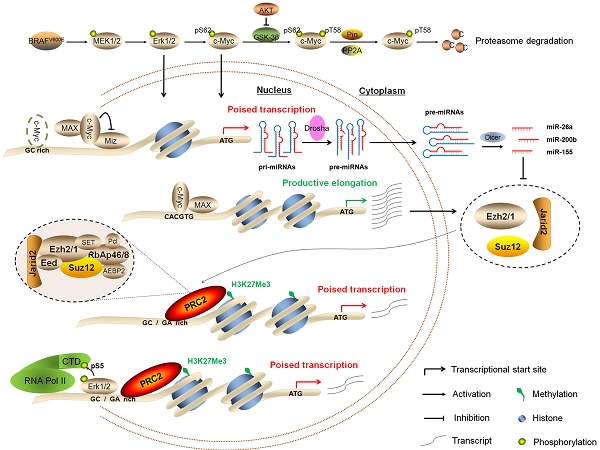当前位置:
X-MOL 学术
›
Theranostics
›
论文详情
Our official English website, www.x-mol.net, welcomes your feedback! (Note: you will need to create a separate account there.)
Metabolomics Identifies Metabolic Markers of Maturation in Human Pluripotent Stem Cell-Derived Cardiomyocytes
Theranostics ( IF 12.4 ) Pub Date : 2017-05-26 , DOI: 10.7150/thno.19390 Vijesh J Bhute 1 , Xiaoping Bao 1 , Kaitlin K Dunn 1 , Kylie R Knutson 1 , Eric C McCurry 1 , Gyuhyung Jin 1 , Wei-Hua Lee 2 , Sarah Lewis 2 , Akihiro Ikeda 2 , Sean P Palecek 1
Theranostics ( IF 12.4 ) Pub Date : 2017-05-26 , DOI: 10.7150/thno.19390 Vijesh J Bhute 1 , Xiaoping Bao 1 , Kaitlin K Dunn 1 , Kylie R Knutson 1 , Eric C McCurry 1 , Gyuhyung Jin 1 , Wei-Hua Lee 2 , Sarah Lewis 2 , Akihiro Ikeda 2 , Sean P Palecek 1
Affiliation

|
Cardiovascular disease is a leading cause of death worldwide. Human pluripotent stem cell-derived cardiomyocytes (hPSC-CMs) hold immense clinical potential and recent studies have enabled generation of virtually pure hPSC-CMs with high efficiency in chemically defined and xeno-free conditions. Despite these advances, hPSC-CMs exhibit an immature phenotype and are arrhythmogenic in vivo, necessitating development of strategies to mature these cells. hPSC-CMs undergo significant metabolic alterations during differentiation and maturation. A detailed analysis of the metabolic changes accompanying maturation of hPSC-CMs may prove useful in identifying new strategies to expedite hPSC-CM maturation and also may provide biomarkers for testing or validating hPSC-CM maturation. In this study we identified global metabolic changes which take place during long-term culture and maturation of hPSC-CMs derived from three different hPSC lines. We have identified several metabolic pathways, including phospholipid metabolism and pantothenate and Coenzyme A metabolism, which showed significant enrichment upon maturation in addition to fatty acid oxidation and metabolism. We also identified increases in glycerophosphocholine and the glycerophosphocholine:phosphocholine ratio as potential metabolic biomarkers of maturation. These biomarkers were also affected in a similar manner during murine heart development in vivo. These results support that hPSC-CM maturation is associated with extensive metabolic changes in metabolic network utilization and understanding the roles of these metabolic changes has the potential to develop novel approaches to monitor and expedite hPSC-CM maturation.
中文翻译:

代谢组学鉴定人多能干细胞来源的心肌细胞成熟的代谢标志物
心血管疾病是全世界死亡的主要原因。人类多能干细胞来源的心肌细胞 (hPSC-CM) 具有巨大的临床潜力,最近的研究已经能够在化学成分明确且无异源的条件下高效生成几乎纯的 hPSC-CM。尽管取得了这些进展,hPSC-CM仍表现出不成熟的表型,并且在体内具有致心律失常性,因此需要开发使这些细胞成熟的策略。hPSC-CM 在分化和成熟过程中经历显着的代谢改变。对伴随 hPSC-CM 成熟的代谢变化的详细分析可能有助于确定加速 hPSC-CM 成熟的新策略,并且还可以提供用于测试或验证 hPSC-CM 成熟的生物标志物。在这项研究中,我们确定了来自三种不同 hPSC 系的 hPSC-CM 在长期培养和成熟过程中发生的整体代谢变化。我们已经确定了几种代谢途径,包括磷脂代谢以及泛酸和辅酶 A 代谢,除了脂肪酸氧化和代谢外,这些代谢途径在成熟时也显示出显着的富集。我们还确定了甘油磷酸胆碱和甘油磷酸胆碱:磷酸胆碱比率的增加作为成熟的潜在代谢生物标志物。这些生物标志物在小鼠体内心脏发育过程中也以类似的方式受到影响。这些结果支持 hPSC-CM 成熟与代谢网络利用中的广泛代谢变化相关,了解这些代谢变化的作用有可能开发出监测和加速 hPSC-CM 成熟的新方法。
更新日期:2017-07-01
中文翻译:

代谢组学鉴定人多能干细胞来源的心肌细胞成熟的代谢标志物
心血管疾病是全世界死亡的主要原因。人类多能干细胞来源的心肌细胞 (hPSC-CM) 具有巨大的临床潜力,最近的研究已经能够在化学成分明确且无异源的条件下高效生成几乎纯的 hPSC-CM。尽管取得了这些进展,hPSC-CM仍表现出不成熟的表型,并且在体内具有致心律失常性,因此需要开发使这些细胞成熟的策略。hPSC-CM 在分化和成熟过程中经历显着的代谢改变。对伴随 hPSC-CM 成熟的代谢变化的详细分析可能有助于确定加速 hPSC-CM 成熟的新策略,并且还可以提供用于测试或验证 hPSC-CM 成熟的生物标志物。在这项研究中,我们确定了来自三种不同 hPSC 系的 hPSC-CM 在长期培养和成熟过程中发生的整体代谢变化。我们已经确定了几种代谢途径,包括磷脂代谢以及泛酸和辅酶 A 代谢,除了脂肪酸氧化和代谢外,这些代谢途径在成熟时也显示出显着的富集。我们还确定了甘油磷酸胆碱和甘油磷酸胆碱:磷酸胆碱比率的增加作为成熟的潜在代谢生物标志物。这些生物标志物在小鼠体内心脏发育过程中也以类似的方式受到影响。这些结果支持 hPSC-CM 成熟与代谢网络利用中的广泛代谢变化相关,了解这些代谢变化的作用有可能开发出监测和加速 hPSC-CM 成熟的新方法。


























 京公网安备 11010802027423号
京公网安备 11010802027423号